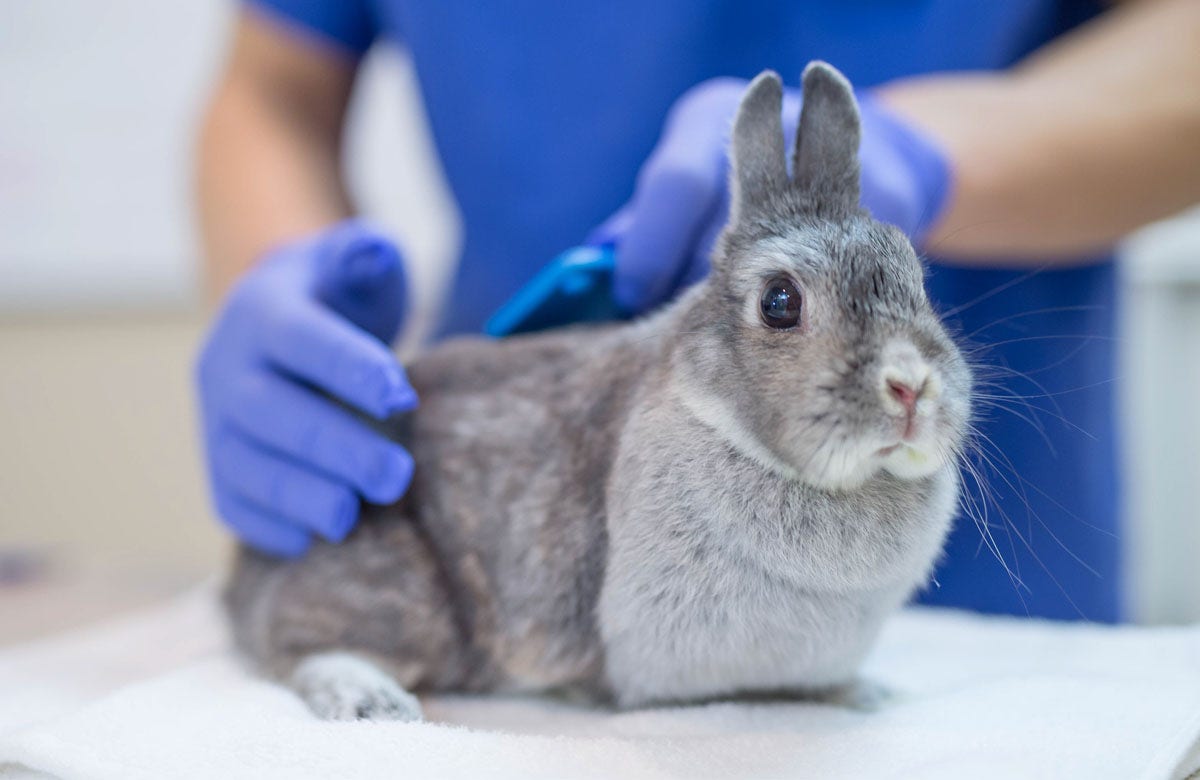Health
Family with Down syndrome son went from shock to gratitude: 'Lost the air in my chest'

“I literally felt like I’d lost the air in my chest. I couldn’t speak.”
That was the immediate reaction of a Florida dad and entrepreneur when he learned during an urgent phone call from his wife — who was pregnant with their fourth child and had just finished talking with a doctor — that their new baby might be born with Down syndrome.
“I was sad. I was angry. I was frustrated,” said Aric Berquist, who shared his thoughts in a video (see the video at the top of this article) and in an interview with Fox News Digital.
RARE DISEASE DIAGNOSIS STRENGTHENS BOND BETWEEN TWIN SISTERS: ‘DOING OUR BEST’
Berquist said that on the phone call, he “wanted to stay calm” for the sake of his wife, Gretchen, “who was teary” as the couple talked over the news.
After they hung up, as he struggled with his emotions, he said, “I just felt this, heard this voice say, ‘Who are you to tell me what a blessing is?’”
Aric Berquist’s son, Asher, is shown at age 9 tossing a football with his dad at home. Said Berquist about the day his son was born, “I really do feel that on that day, treasure was put in my hands.” (Aric Berquist/The Lesson)
The deeply faithful Christian parent said the voice “wasn’t angry. It felt strong, and it felt safe — and it was so shocking that all of my arm hairs were raised to the point that it hurt.”
And he found himself “just bursting into tears.”
A subsequent ultrasound confirmed the diagnosis of Down syndrome for their new baby — and the couple did all they could to prepare themselves, and their older children, for the baby’s arrival.
“He continues to teach me more about life and myself than I could ever dream of articulating.”
That year, the dad said, “Asher was born. And I really do feel that on that day, treasure was put in my hands.”
Berquist described the joy he believes their youngest has brought the entire family — both from the time he was born and up to the present day, including at the recent wedding of their daughter, the oldest of their four children.
“That kid has literally changed my life in an amazing way,” he said.

The Berquist family at the recent wedding of daughter Abby, center. Youngest child Asher is shown at right, front. (Berquist family)
The couple’s youngest is 13 years old today and in sixth grade.
“And he continues to teach me more about life and myself than I could ever dream of articulating.”
He “loves sports,” added Berquist. “He’ll play flag football and he’s done soccer. He loves to play sports with his two older brothers, Andrew and Adam.”
“He is available to everyone he engages with.”
He said his son Asher’s bond with brother Adam — the sibling closest to him in age — “is one of the richest and most beautiful things I’ve ever seen.”
MOTHER FRANTIC TO SAVE CLINICAL TRIAL THAT COULD CURE HER DAUGHTER: ‘THE TREATMENT IS SITTING IN A FRIDGE’
Their youngest “occupies the current moment like nobody I have ever met,” Berquist also said. “He is present. And he is available to everyone he engages with.”
He makes others feel “acknowledged. And I’m starting to think that we, as the ‘typical people,’ have the disabilities — not him.”

“It’s been really wonderful to see how he’s developed — just his growth within each phase,” said Aric Berquist of his youngest child. (Aric Berquist/The Lesson)
Today, Berquist also told Fox News Digital, “he’s doing so well. It’s been really wonderful to see how he’s developed — just his growth within each phase. But more than that, it’s been really touching as a parent to see how he’s connected with so many people in his life. It’s been beautiful to watch.”
Changes in development
Heart problems are a concern for children with Down syndrome — and young Asher had bypass surgery within the first three months of his life, his family said. After a week in the hospital, he returned home to his parents and siblings.
Down syndrome is a condition in which a baby is born with an extra chromosome.
Chromosomes determine how the body forms and functions. Those born with an extra one experience changes in the way the body and brain develop.
FAMILY SELLING DREAM HOME TO FUND LIFE-SAVING TREATMENT FOR 5-YEAR-OLD DAUGHTER
A baby is typically born with 46 chromosomes. A baby with Down syndrome has a full or partial copy of chromosome 21.
About 5,700 babies are born with Down syndrome each year in the U.S., and over 400,000 people in the country currently live with it, according to the Centers for Disease Control and Prevention (CDC).

About 5,700 babies are born in the U.S. with Down syndrome each year and over 400,000 people in the country currently live with it. The blue-and-yellow ribbon represents Down syndrome awareness. (iStock)
The life expectancy of those with the condition has increased dramatically over the years.
In 1983, it was just 25 years old — but today it’s 60 years old, per the Global Down Syndrome Foundation, a nonprofit based in Denver, Colorado.
The most common type of Down syndrome is trisomy 21, which accounts for 95% of all cases. Less common types of Down syndrome are translocation (caused by rearranged chromosome material) and mosaicism (when there is a mixture of two types of cells).
Not every child with Down syndrome will display the developmental symptoms.
There are no known ways to prevent the condition during pregnancy and no known root causes, experts say.
One risk factor associated with Down syndrome is the age of the mother. For a 25-year-old pregnant woman, the odds are about 1 in 1,250. At age 40, those odds are 1 in 100, statistics show.

Dad Aric Berquist, shown on a walk on the beach, said he cherishes the “blessings” brought to his whole family by his youngest son. (Aric Berquist/The Lesson)
There are both physical and developmental symptoms of Down syndrome.
Physical symptoms may include a flattened face; shorter height; short neck; small ears, hands and feet; and decreased muscle tone, according to the CDC.
CLICK HERE TO SIGN UP FOR OUR HEALTH NEWSLETTER
Developmental symptoms, meanwhile, may include a short attention span, impulsive behavior, slow learning and delayed speech development.
Not every child with Down syndrome will display each of these traits.
‘Walk through that day’
A key life lesson for Berquist through his experiences has been about being present.
Know that “your feet are on the ground today,” he said.
“Walk through that day.”
For more Health articles, visit www.foxnews.com/health
When there are life challenges, he said, “when we walk through things that are tough, we’re being cleaned. We’re being made into something beautiful if we allow it and if we walk through it.”
Berquist also said, “Breathe that air. Engage with that beauty. Because that is your life.”
Angelica Stabile and Ashlyn Messier, both of Fox News Digital, contributed reporting.

Health
Scientists May Be Able to Make Grapefruits Compatible With Medications They Currently Interfere With

You may be among the millions of people who have seen a surprisingly specific warning like this on the labels of drugs you take:
Avoid eating grapefruit or drinking grapefruit juice while using this medication.
Such warnings are issued for dozens of substances, including docetaxel, a cancer drug; erythromycin, an antibiotic; and some statins, the cholesterol-lowering drugs prescribed to more than a third of American adults over 40.
The problem is a set of molecules, furanocoumarins. High levels of furanocoumarins interfere with human liver enzymes, among other processes. In their presence, medications can build up to unhealthy levels in the body. And grapefruits and some related citrus fruits are full of them.
But there is no such warning for other kinds of citrus, such as mandarins and other oranges. Citrus researchers at the Volcani Center in Israel reported Wednesday in the journal The New Phytologist that, by crossing mandarins and grapefruit, they’ve uncovered genes that produce furanocoumarins in some citrus fruits. It’s a finding that opens the possibility of creating grapefruit that doesn’t require a warning label.
Scientists had worked out the compounds’ structures and pieced together a basic flowchart of how they are made years ago, said Yoram Eyal, a professor at the Volcani Center. But the precise identities of enzymes catalyzing the process — the proteins that snip off a branch here, or add a piece there — remained mysterious. He and his colleagues knew that one way to identify them was to breed citrus high in furanocoumarins with those without. If the offspring of such a cross had varying levels of the substances, it should be possible, by digging into their genetics, to pinpoint the genes for the proteins.
“We were afraid to approach it, because it’s very time-consuming and it takes many years,” he said, noting how involved it can be to grow new trees from seeds and assess their genetics. “But finally, we decided we have to dive in.”
When they examined the offspring of a mandarin and a grapefruit, the researchers saw something remarkable. Fifty percent of the young plants had high levels of furanocourmains, and 50 percent had none. That particular signature meant something very specific, in terms of how the ability to make these substances is inherited.
“We saw there was only one gene that could have controlled it,” said Livnat Goldenberg, a Volcani Center researcher who is the lead author of the new study.
The researchers soon identified the gene controlling the production of furanocoumarins in leaves and fruit, which produces an enzyme called 2-oxoglutarate-dependent dioxygenase, or 2OGD for short. Mandarins, it turns out, have a mutated form of this gene that keeps the enzyme from functioning properly. This version cropped up in all the mandarin and orange varieties the researchers checked, explaining why they do not cause the same problems as grapefruit in people taking prescription medications. In these plants, furanocoumarin production is paused.
With gene editing technology, it should be possible to alter the gene in grapefruit as well, Dr. Eyal suggests. The team at the Volcani Center is now exploring that project.
Looking at how widespread this mutated version is in mandarins and some other citrus, the scientists speculate that some gene nearby on the genome must play an important role in a highly prized trait. A long-ago citrus breeder, selecting for some unknown quality, must have unwittingly spread this furanocoumarin-busting version of the gene to an ancestor of modern varieties of mandarins and oranges.
All these years later, that person’s work is coming to light, under the gaze of geneticists, who may, someday, put grapefruit back on the menu.
Health
‘Rabbit fever’ cases rising in US as CDC warns of zoonotic bacterial disease

Cases of tularemia, also known as “rabbit fever,” are on the rise in the U.S., according to a new report from the Centers for Disease Control and Prevention (CDC).
Caused by the bacteria Francisella tularensis, the disease commonly infects rabbits, hares and rodents. However, it is zoonotic, which means it can spread from animals to humans.
The bacteria is a “tier-1 select agent,” a classification given to agents and toxins that “present the greatest risk of deliberate misuse with significant potential for mass casualties or devastating effects to the economy, critical infrastructure or public confidence, and pose a severe threat to public health and safety,” per the CDC.
SUPERBUGS DUE TO ANTIBIOTIC RESISTANCE COULD KILL 39 MILLION PEOPLE BY 2050, LARGE STUDY FINDS
Although tularemia is relatively rare, with only 2,462 diagnoses between 2011 and 2022, cases have risen 56% compared to the prior decade (2001 to 2010), as reported in the CDC’s Morbidity and Mortality Weekly Report.
Cases of tularemia, also known as “rabbit fever,” are on the rise in the U.S., according to a new report from the CDC. (iStock)
“Increased reporting of probable cases might be associated with an actual increase in human infection, improved tularemia detection or both,” the report states.
Health
Diabetes, heart disease cases skyrocket — and scientists pinpoint one key reason

Millions of new cases of diabetes and heart disease every year are caused by sugary drinks, according to newly published research.
Tufts University in Boston led the study, which found that about 2.2 million new diagnoses of type 2 diabetes and 1.2 million new cases of cardiovascular disease were attributed to sugar-sweetened sodas and juices each year, according to a press release.
The findings were published in the journal Nature Medicine this week.
HEART ATTACK RISK COULD RISE WITH ARTIFICIAL SWEETENER CONSUMPTION, STUDY FINDS
The highest rates were found in Colombia, where 48% of new diabetes cases were linked to sugary drinks, and in Mexico, where nearly a third of cases were attributed to them.
Meanwhile, in Latin America, more than 24% of new diabetes cases were linked to sugary beverages, and 21% in sub-Saharan Africa, the study found.
About 2.2 million new cases of type 2 diabetes and 1.2 million new cases of cardiovascular disease occur each year worldwide due to consuming sugar-sweetened soda and juices, according to the findings of a new study. (iStock)
In South Africa, 27.6% of new diabetes cases and 14.6% of cardiovascular disease cases were attributed to sugary drinks.
Sugary drinks are rapidly digested, causing a spike in blood sugar levels with little nutritional value.
Sugary drinks cause blood sugar to spike because they are “rapidly digested,” the research team said.
When consumed on a long-term basis, these types of beverages, in addition to increasing the risk of type 2 diabetes and heart disease, can also lead to weight gain and insulin resistance, the researchers added.

Men are more likely than women to suffer the consequences of sugary drink consumption, as are younger adults compared to their older counterparts, a new study asserts. (iStock)
Professor Dariush Mozaffarian, the study’s senior author, said in a university press release, “Sugar-sweetened beverages are heavily marketed and sold in low- and middle-income nations.”
He added, “Not only are these communities consuming harmful products, but they are also often less well-equipped to deal with the long-term health consequences.”
FRIENDS, FAMILY MAY PROTECT AGAINST HEART ATTACK, STROKE AND TYPE 2 DIABETES, STUDY SUGGESTS
Certain groups are more likely to experience negative health effects from sugary drinks, including men and younger adults, the researchers noted, as news agency SWNS also noted.
New Jersey-based registered dietitian Erin Palinski-Wade, who was not involved in the research, said the findings were to be expected, as diets rich in added sugars are more likely to increase the risk of chronic health conditions, including type 2 diabetes.

When consumed on a long-term basis, these types of beverages can also lead to weight gain and insulin resistance, experts say. (iStock)
“Sugar-sweetened beverages are a major cause of added sugar in the diet and easy to overconsume, as they provide little fullness,” she told Fox News Digital.
“The high calorie content and lack of satisfaction due to little protein, fat or fiber in these drinks can lead to excess calorie consumption, which can lead to weight gain — especially gains in visceral fat (belly fat), which has been found to increase the risk of type 2 diabetes,” she went on.
“Sugar-sweetened beverages are easy to overconsume, as they provide little fullness.”
Palinski-Wade pointed out that there were some limitations to the new research.
“This was an observational study, not a causation study, and shows only an association between diets containing sugar-sweetened beverages and diabetes,” she noted.
“It does not prove that those drinks alone trigger an onset of type 2 diabetes.”
What needs to change?
To remedy the issue, the study authors called for a “multi-pronged approach,” including public health campaigns, regulations on advertising and taxes on sugar-sweetened beverages, the release stated.
CLICK HERE TO SIGN UP FOR OUR HEALTH NEWSLETTER
“We need urgent, evidence-based interventions to curb consumption of sugar-sweetened beverages globally, before even more lives are shortened by their effects on diabetes and heart disease,” first author Laura Lara-Castor, now at the University of Washington, said in the release.

Approximately 65% of adults in the U.S. consume sugar-sweetened beverages daily. (iStock)
Mexico implemented a sugary drinks tax in 2014, which has shown to be effective in reducing consumption, the researchers stated.
“Much more needs to be done, especially in countries in Latin America and Africa, where consumption is high and the health consequences severe,” wrote Mozaffarian.
For more Health articles, visit www.foxnews.com/health
“As a species, we need to address sugar-sweetened beverage consumption.”
Many different factors are involved in insulin resistance and type 2 diabetes, Palinski-Wade noted.
“As a species, we need to address sugar-sweetened beverage consumption.”
“However, reducing your intake of sugar-sweetened beverages can go a long way toward improving overall blood sugar regulation and future health.”
The new research was supported by the Gates Foundation, the American Heart Association and Mexico’s National Council for Science and Technology.
Fox News Digital reached out to the researchers for further comment.
-

 Business1 week ago
Business1 week agoThese are the top 7 issues facing the struggling restaurant industry in 2025
-

 Culture1 week ago
Culture1 week agoThe 25 worst losses in college football history, including Baylor’s 2024 entry at Colorado
-

 Sports1 week ago
Sports1 week agoThe top out-of-contract players available as free transfers: Kimmich, De Bruyne, Van Dijk…
-

 Politics1 week ago
Politics1 week agoNew Orleans attacker had 'remote detonator' for explosives in French Quarter, Biden says
-

 Politics1 week ago
Politics1 week agoCarter's judicial picks reshaped the federal bench across the country
-

 Politics6 days ago
Politics6 days agoWho Are the Recipients of the Presidential Medal of Freedom?
-

 Health5 days ago
Health5 days agoOzempic ‘microdosing’ is the new weight-loss trend: Should you try it?
-

 World1 week ago
World1 week agoIvory Coast says French troops to leave country after decades

















